
Casper is a city in, and the county seat of, Natrona County, Wyoming, United States. Casper is the second-largest city in the state, with the population at 59,038 as of the 2020 census. Only Cheyenne, the state capital, is larger. Casper is nicknamed "The Oil City" and has a long history of oil boomtown and cowboy culture, dating back to the development of the nearby Salt Creek Oil Field.
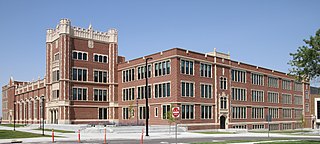
Natrona County High School (NCHS) is a public secondary school located in Casper, Wyoming, United States. It serves Natrona County School District #1, which encompasses all of Natrona County, Wyoming.
The Casper Star-Tribune is a newspaper published in Casper, Wyoming, with statewide influence and readership.
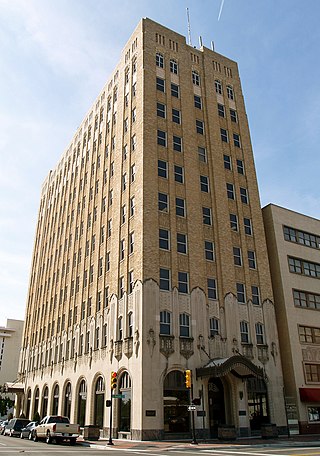
The Oklahoma Natural Gas Company Building is a historic building in Tulsa, Oklahoma, at 624 South Boston Ave. It was one of the first local Art Deco buildings built in the new Art Deco style, along with the Public Service of Oklahoma Building. This choice by the relatively conservative utility companies made the style acceptable in the city, with many Art Deco buildings built subsequently in Tulsa. The building was designed by Frank V. Kirshner and Arthur M. Atkinson. It was built of reinforced concrete, and clad in buff brick, except for the lower two stories, which are clad in limestone. The verticalness of the building is emphasized by piers rising the entire height of the facade with windows placed between the piers.

The Bishop House in Casper, Wyoming was built in 1907. It was listed on the National Register of Historic Places in 2001.

Teapot Rock, also known as Teapot Dome, is a distinctive sedimentary rock formation in Natrona County, Wyoming, notable for lending its name to a nearby oil field that became notorious as the focus of the Teapot Dome scandal, a bribery scandal during the presidential administration of Warren G. Harding. The site was listed on the National Register of Historic Places in 1974.

The Roosevelt School in Casper, Wyoming, originally named North Casper School, was designed by leading Wyoming architectural firm Garbutt, Weidner & Sweeney in 1921 and was built in 1922. Need for the school followed from a post-World War I boom in Casper's economy and population, connected to a boom in the petroleum industry there. The school served as a neighborhood center in an otherwise-neglected area of the town.

The Niagara Mohawk Building is an art deco classic building in Syracuse, New York. The building was built in 1932 and was headquarters for the Niagara Mohawk Power Corporation, what was "then the nation's largest electric utility company".

The Salvation Army Headquarters, later known as the Seton Center, was a former historic structure in St. Paul, Minnesota. Deemed eligible for listing on the National Register of Historic Places (NRHP) in February 1983, owner opposition prevented it from being officially listed. Despite protests by preservationists, the building was demolished by its owner in January 1998.

The Townsend Hotel, also known as the Hotel Townsend, is a historic hotel in Casper, Wyoming. It was renovated and expanded for government use in 2008-2009 and is now known as the Townsend Justice Center.
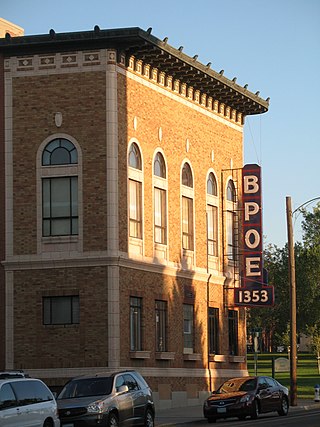
Arthur M. Garbutt was an architect who practiced in Fort Collins, Colorado and Casper, Wyoming. He worked from approximately 1903 to 1928.

The Hulman Building is a ten-story art deco high rise in downtown Evansville, Indiana. Construction began in 1928 and was completed in 1930 with a brick facade of light yellow. It was the first of several Art Deco buildings to grace Evansville's skyline.

The Tivoli Building is a historic building at 301 West Lincolnway in downtown Cheyenne, Wyoming, and a part of the Downtown Cheyenne Historic District.

Midwest Steel & Iron Works was a metal fabrication company based in Denver, Colorado. Founded in 1893, the company was known for a time as the Jackson-Richter Iron Works. The company was one of the "oldest and largest metal fabricators" in Denver. The company built both structural and ornamental components for structures throughout Colorado, Wyoming, and New Mexico. The company's headquarters on Larimer Street in Denver includes an Art Deco office building and consists of a four-building complex that is itself considered a historic industrial site. The complex served as the company's headquarters from 1923 to 1983.
Leon C. Goodrich was an American architect of Casper, Wyoming. A number of his works are listed on the National Register of Historic Places.
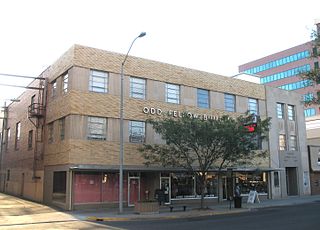
The Odd Fellow Building or Odd Fellows Building, now known as Wolcott Galleria, is a historic building in Casper, Wyoming. It was built in 1952 and designed by architect Jan Wilking of local architectural firm Goodrich & Wilking. Casper's economy was then doing well and this building, unusual for Casper, was built with an arcade of first floor shops. The Odd Fellows used the second floor, which had a double-height ballroom. There were offices on the third.
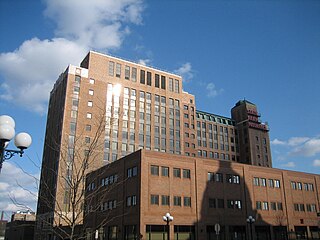
The State Farm Downtown Building, variously known as the State Farm Insurance Building or the State Farm Fire Building, is an Art Deco building in downtown Bloomington, Illinois. It served as the corporate headquarters for State Farm Insurance from its construction until 1974.

The Casper Motor Company-Natrona Motor Company is a historic building in Casper, Wyoming which was listed on the National Register of Historic Places in 1994. It eventually became the Iris Theater and then later, and currently as of 2018, The Lyric, an event venue.

The Midwest Oil Company Hotel, at 136 East 6th Street in Casper, Wyoming, is an historic hotel building which was listed on the National Register of Historic Places in 1983. It has also served as the Casper Women's Club House. Originally built by the Midwest Oil Company to accommodate workers during the Casper oil boom, it was taken over by Standard Oil Company of Indiana when that company bought Midwest Oil. In the 1930s, in the waning days of oil production in Natrona County, a local women's organization bought the hotel for $8,000 and was renamed the Casper Women's Club House.
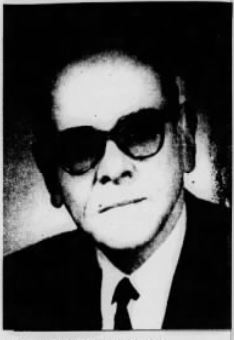
Leon Bishop Senter was an American architect who worked primarily in Oklahoma. Although not formally educated in architecture, he became Oklahoma's first licensed architect in 1925 and designed several buildings on the National Register of Historic Places.




















